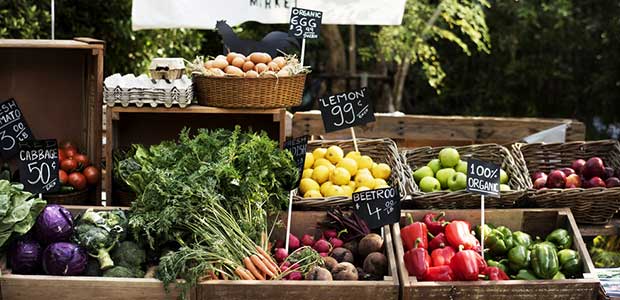
Sustainable Cooking for Individuals and Restaurants: The NYT Greenhouse, Part 4
For the New York Times’ last climate change event, The Greenhouse spoke with two chefs on how to utilize basic ingredients for sustainable cooking in individual and restaurant business settings alike.
- By Amanda Smiley
- May 01, 2020
For its fifth and final Earth Month event, The Greenhouse hosted a conversation among climate reporter Somini Sengupta and two chefs across the world: Matthew Orlando and Marcus Samuelsson. Despite their varied backgrounds, cuisine experience and ingredients selection, the chefs discuss the sustainability of cooking: using more, wasting less and getting creative—even during the pandemic.
Matthew Orlando, lead chef and owner of Amass, a sustainably driven restaurant in Copenhagen, and Marcus Samuelsson, head chef and restaurateur at Red Rooster in New York opened up their kitchens to show us tips on how to make the most of what’s already in our fridge.
What we eat, how we eat, and what we don’t eat has an enormous effect on our carbon footprint. Many people might not realize, but food systems are hugely important in the climate change conversation. This includes conversations about agriculture, farming, local and non-local product sources, cooking waste and even compost.
But even if you know nothing about these conversations, Marcus and Matt make it easy to start simple. During this global pandemic, not only are people cooking and utilizing their kitchens more, but restaurants and chefs also are working to uphold their livelihoods and communities.
For Marcus, many people in his life and in Ethiopia thought about sustainable eating out of necessity—not just because of global efforts to eat and cook green. The majority of people in Ethiopia are eating plant-based diets already, and they only eat meat on holidays or special occasions. Many of them cook with little to no food waste.
In his kitchen today, Marcus cooked a familiar dish using simple ingredients and hardly any waste. Using charred vegetables (broccoli, shitake mushrooms, cauliflower, roasted plantains, and pumpkin) on Ethiopian bread (injera bread) with a chickpea purée and a vinaigrette (using smoked flat seeds, lime/lemon juice, olive oil and paprika), Marcus made a healthy, flavorful and sustainable vegetarian flatbread that produced almost no food waste.
In Copenhagen, Matthew showed viewers how to sustainably use one of the world’s most stable and accessible ingredients: the potato. In cooking, he says, there is no such thing as a byproduct—only another product. Potatoes, as it turns out, are a great example of this.
Cooking is something where you will always create “waste,” but Matthew says he wants to redefine that terminology and learn to use that waste. For example, after making mashed potatoes, most people throw out the skins—which hold the bulk of the flavor and nutrients for potatoes.
With the leftover skins, you can fry them in oil (and make potato chips), blanch and roast them to eat as a snack or grind them into a powder to sprinkle over your mashed potatoes.
Sustainable cooking is not just good for the environment. It can help you better use the food in your kitchen and better feed your customers as a restaurant or organization feeding many. While many communities use sustainable cooking out of necessity, many (like the U.S.) tend to very wasteful. In the U.S. alone, nearly 40 percent of food gets thrown away every year—which amounts to $162 billion annually.
To be green and sustainable, the more we can get people to cook and incorporate these habits into their own food practices, the sooner sustainability is not a label but just something you do.
“The mindset of the way you cook is probably the most important part of this conversation,” said Matthew. You can learn to cook, but you need to redefine and change the way you look at ingredients.
When asked why sustainable cooking is important to him, Matthew said, “It’s the right thing to do, and it makes my soul feel good.”
Food sustainability is good for the individual soul and communities as a whole. Many people do not realize that the word “restaurant” comes from the word “restore,” Marcus said. The idea of feeding others and a restaurant is about impacting and restoring your community. This extends to farmers markets and utilizing local produce. Marcus is helping to feed those in need during this pandemic, and he workers to feed those with lower incomes, first responders and more. It’s been one of the toughest but also most meaningful times in his career.
“Sustainability doesn’t belong to one cuisine,” said Sengupta. “It does not belong to one type of food or cuisine.”
About the Author
Amanda Smiley is the Content Editor for Occupational Health Magazine and Environmental Protection for 1105 Media. You can reach her at asmiley@1105media.com.